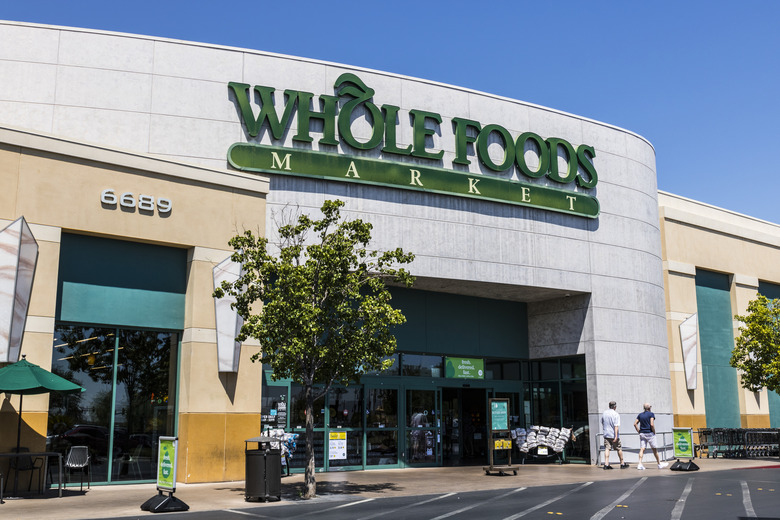Whole Foods' Lower Prices Are A Careful Illusion — Here's Why
When Amazon made the big move to purchase the nationwide health food chain Whole Foods they made some lofty claims. Slimming down costs on avocados and fruit, they promised lower food prices at the historically pricey grocery store — price drops that have now been revealed to be totally inconsistent.
While foods like avocados, bananas, and salmon are suddenly more affordable, prices on other popular items are creeping back up. What goes down must come up — somewhere, at least.
Gordon Haskett, a research firm specializing in price analysis, did a deep dive into Whole Foods's price changes and revealed some troubling information. The overall cost of groceries at the chain has dropped a dismal one percent since the brand takeover, a number far below the promising discounts health food fans were hoping for.
Amazon maintained the illusion of cheaper products by initiating some dramatic price drops right away. The famous avocado discount made the fruit once again affordable, down from otherwise wildly expensive prices resulting from supply issues. Salmon got a slash in pricing, alongside apples, eggs, and other easily advertisable staples.
Beneath the surface, though, prices were simmering back up. Frozen foods, for instance, became seven percent more expensive in less than a month after the Amazon takeover. Snack food prices went up 5.3 percent and dairy products got two percent more expensive. These categories of food are less immediately noticeable for their pricing, allowing these swaps to go unnoticed — they're cheaper, more commonplace, and less of a splurge. With these changes, though, that might all change.
"The whole game is that you want the hundred most recognizable things — milk, apples, bananas — to be cheaper," said Jan Rogers Kniffen, an industry consultant and former department store executive to the Washington Post. "If you can do that, you can build a perception that the whole store is competitively priced."
The deception is working. Since Amazon's takeover, Whole Foods' clientele has increased by an impressive 25 percent. Whole Foods has made over $1.6 million in sales through Amazon-only services, including Prime Now and Amazon Fresh.
But while consumers perceive the store to be getting more affordable, nothing's really changing. Seventy percent of prices remained exactly the same. And what did go down had to go up elsewhere, essentially making up for the difference.
According to David J. Livingston, a supermarket analyst, it's "just like when a grocer claims to have lowered 5,000 prices. What they don't tell you is they raised prices on 45,000 items to pay for it."
Whole Foods, often jokingly termed "Whole Paycheck," continues to drain our wallets, though the chain is doing everything it can to convince us otherwise. For instance, we bet you can't guess the ridiculous prices on these Whole Foods items — prices that, largely, remain the same.
